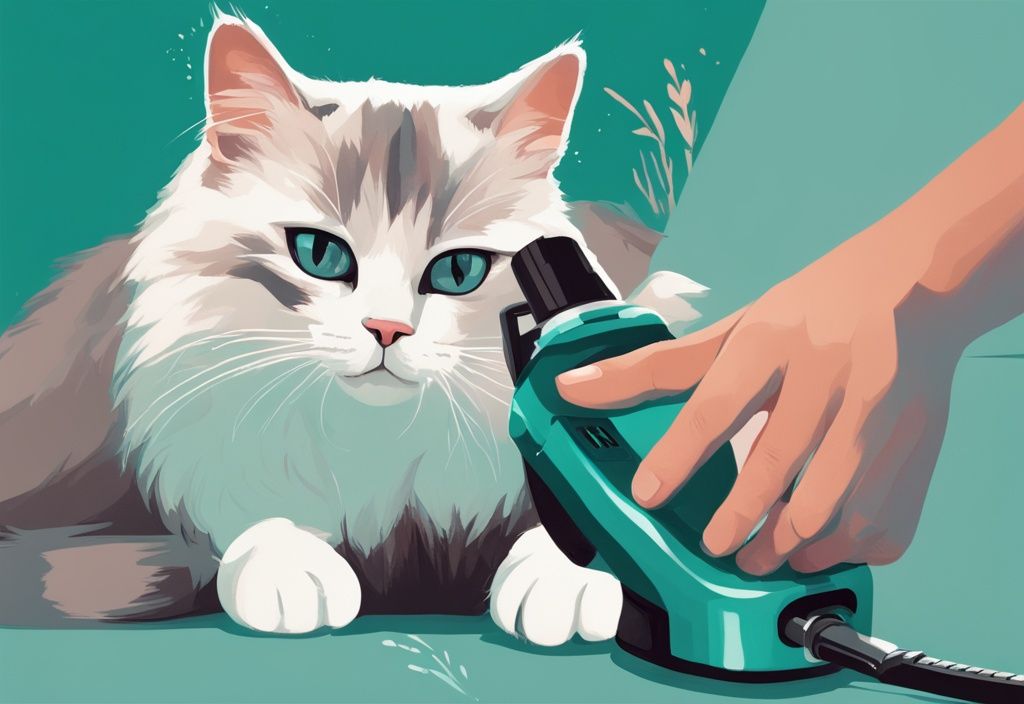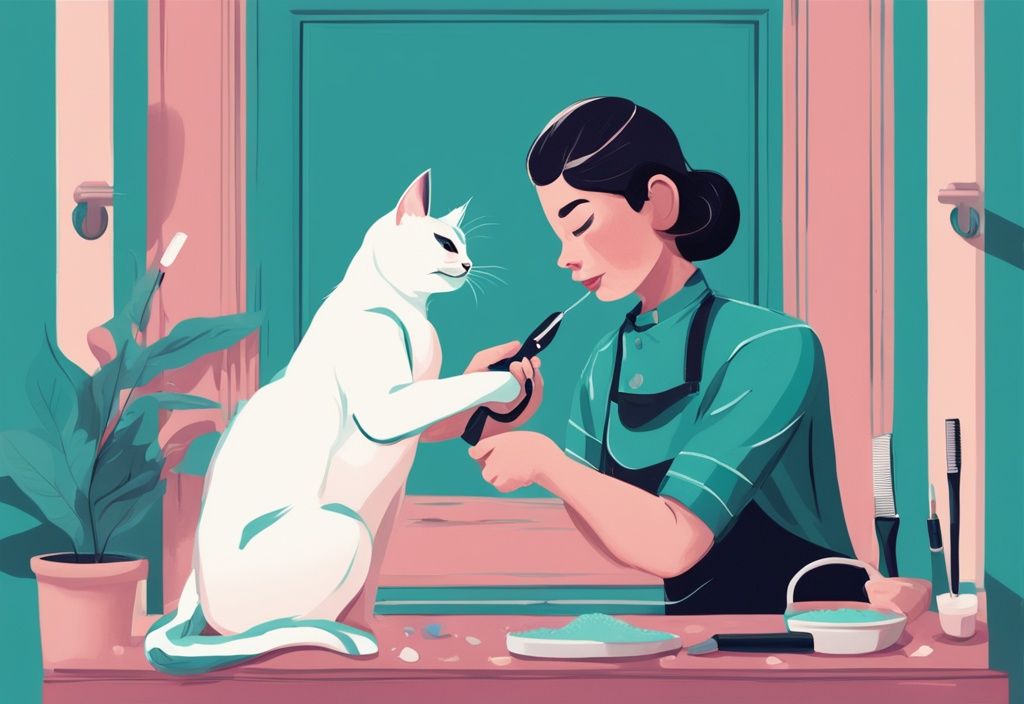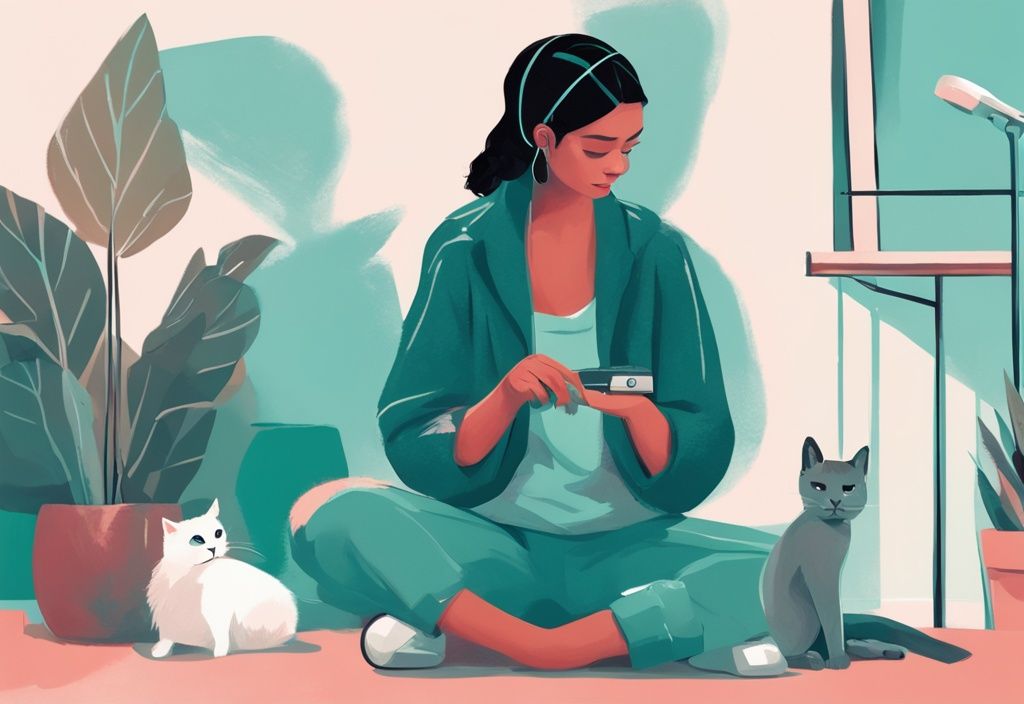Ever thought about giving your cat a fresh new look? Shaving your feline friend can be a real game-changer! Whether it’s to keep Whiskers cool during those sizzling summer days or to tackle those pesky mats, this guide has got your back. With a sprinkle of humor and a dash of expertise, I’ll walk you through the process, making it as breezy as a walk in the park with Max. Let’s dive in and transform this task into a fun bonding experience!
How to Shave Your Cat: A Detailed Process
Shaving your cat might sound like a wild adventure, but with a sprinkle of patience and a dash of technique, it can be a breeze. Whether you’re tackling dense fur or keeping those sensitive spots in check, here’s how to make your feline friend feel fabulous.
Starting with the Least Sensitive Areas
Begin your furry mission by focusing on the less sensitive parts of your cat’s body. Picture this: starting at the neck and gliding towards the tail. It’s like a gentle introduction to the clippers, helping your cat get used to the new sensation. Concentrate on areas with dense fur, like the back and sides, where tangles love to hide. By starting here, you set the stage for a smoother, less stressful experience for both you and your whiskered companion.
Effective Shaving Techniques and Tips
Here’s the secret sauce: hold the skin taut and shave in the direction of hair growth. Think of it like giving your cat a gentle massage with clippers. Use short, gentle strokes to keep discomfort at bay and avoid pressing too hard—no one wants a grumpy kitty! Professional pet clippers are your trusty sidekick, ensuring a smooth cut without any hair-pulling drama. This method keeps your cat comfy and ensures a sleek, even shave.
Handling Sensitive Areas with Care
When it comes to sensitive areas like the belly, nipples, and genitals, think of yourself as a gentle artist. These spots require a soft touch to prevent any oopsies. For long-haired cats, shaving the belly can be a hygiene lifesaver, but it demands your full attention. Always prioritize safety and comfort, moving slowly and watching for any signs of feline discontent.
Dealing with an Uncooperative Cat
If your cat decides to channel their inner drama queen during shaving, keep a close eye on their reactions. Take breaks as needed—sometimes a little pause is all it takes to calm the storm. Avoid using sedation unless it’s absolutely necessary, as it can pose health risks. Shaving in phases can be your secret weapon, reducing stress and making the experience less of a cat-astrophe.
Invalid YouTube video ID
Patience and understanding are your best allies in managing an uncooperative kitty during grooming.

Why Shave Your Cat?
Ever wondered why you might need to shave your furry feline friend? It’s not something you’d do every day, but sometimes it’s necessary for their comfort and health.
Reasons for Shaving a Cat
First off, let’s talk about those pesky matted fur patches. They can sneak up on your cat due to neglect, age, or even health hiccups. Mats are no fun and can be downright painful, so shaving them off is often the best way to go. And if your cat is anything like my Whiskers, who loves basking in the sun, shaving can help keep them cool during those scorching summer days. Think of it as giving your cat a little summer haircut to beat the heat!
Sometimes, shaving is a must for medical reasons. If your cat needs surgery or has a skin condition, a clean shave can be part of their treatment plan. Plus, it can help manage shedding, which is a win-win for both you and your cat, especially if you or someone in your home is prone to allergies.
Benefits of Shaving
Now, let’s dive into the perks! Shaving can be a game-changer for managing shedding and keeping those allergies at bay. Less fur flying around means fewer allergens, making your home a more comfortable place for everyone. During those warm months, a shaved coat can prevent heat stress, keeping your kitty cool and collected.
And let’s not forget about hygiene! Removing matted fur can do wonders for your cat’s cleanliness. It gets rid of dirt and those pesky parasites, promoting healthier skin and a shinier coat. So, while shaving isn’t an everyday task, it can be a fantastic way to ensure your cat’s well-being when needed.
Preparing to Shave Your Cat at Home
Shaving your cat at home can be a bonding experience, but it requires some prep work. Here’s how to make the process as smooth as possible for both you and your feline friend.
Gathering the Necessary Tools
First things first, let’s talk tools. A top-notch, professional-grade pet clipper is your best friend here. Trust me, Whiskers would agree—no one wants a patchy haircut! Skip the bargain trimmers; they often lead to a jagged finish and a grumpy cat. Before you start, gather everything you need: a trusty trimmer, a sturdy grooming table, and perhaps some gloves if you’re feeling cautious. Oh, and make sure your clipper is clean and sharp to avoid any hair-pulling drama.
Creating a Calm Environment
Now, let’s set the stage. A peaceful environment is a game-changer when it comes to keeping your cat relaxed. Pick a quiet spot where your kitty feels at ease. Use your softest voice and gentle hands to reassure them. Remember, patience is key—your cat might not be thrilled about their spa day, but a calm atmosphere can make all the difference.
Securing Your Cat Safely
Safety first! You might need an extra pair of hands to keep your cat still. A gentle but firm hold is essential to prevent any accidental nicks. Leather gloves can be handy to protect against scratches, but they’re not a must. The goal is to keep your furry friend safe and comfy throughout the grooming session.
How to Shave Your Cat: A Detailed Process
Shaving your cat can be a bit like a dance—graceful, yet requiring a touch of finesse. Let’s explore how to make this grooming ritual a breeze for both you and your furry friend.
Starting with the Least Sensitive Areas
When you’re figuring out how to shave a cat, it’s like learning a new dance step. Start with the least sensitive areas to keep things smooth. Begin at the neck and glide towards the tail. This approach helps your feline friend get used to the sensation. Focus on areas with dense fur, like the back and sides, where tangles often play hide and seek. This method not only makes the process easier but also keeps your kitty calm. After all, nobody likes a stressed-out cat, right?

Effective Shaving Techniques and Tips
Mastering the right technique is like finding the rhythm in a song. Hold the skin taut and shave in the direction of hair growth using short, gentle strokes. This reduces the risk of skin irritation and ensures a clean cut. Avoid applying too much pressure; you don’t want to turn this into a wrestling match! Using professional pet clippers is a game-changer. They’re designed to handle a cat’s delicate fur without pulling, making the experience more comfortable for your pet. Trust me, your cat will thank you with those adorable purrs later.
Handling Sensitive Areas with Care
When it comes to shaving sensitive areas, such as the belly, nipples, and genitals, think of it as tiptoeing through a minefield. Extra caution is necessary. These areas are more prone to injury, so proceed with a gentle touch. For long-haired cats, shaving the belly can help manage fur maintenance, but it requires precision and care. Always prioritize your cat’s safety by being patient and attentive during this part of the grooming process. Remember, patience is a virtue, especially with a squirmy kitty.
Dealing with an Uncooperative Cat
Cats can be as unpredictable as a sudden rainstorm, and some may resist grooming. Keep an eye on your cat’s reactions and take breaks if they become too stressed or agitated. Avoid sedation unless absolutely necessary, as it carries health risks. Instead, consider shaving in phases, allowing your cat to relax between sessions. This phased approach can make the process less traumatic and more manageable for both you and your pet. A little patience goes a long way, and soon enough, your cat will be strutting around like the majestic creature they are.
Post-Shaving Care and Monitoring
After giving your feline friend a fresh new look, it’s time to focus on their comfort and well-being. Let’s dive into some essential post-shaving care tips to keep your cat purring with happiness.
Aftercare for Your Shaved Cat
Once you’ve mastered the art of how to shave a cat, the real fun begins with aftercare! Picture this: your cat, looking sleek and stylish, but needing a little extra TLC to stay comfy. Start by gently brushing your cat to whisk away any loose hairs that might be hanging around. This not only keeps them clean but also prevents pesky skin irritation. Over the next few days, keep an eye on your kitty for any signs of discomfort. Notice any unusual scratching or licking? It might be their way of saying, “Hey, something’s not right!”
Checking for Discomfort or Irritation
Now, let’s talk about being a vigilant pet detective! After shaving, it’s crucial to monitor your cat’s skin condition. Look out for excessive licking or scratching—these could be signs that your cat is feeling a bit off. If you spot any nicks or cuts, it’s time to play nurse. Clean the area gently and apply a pet-safe antiseptic if needed. And remember, if the irritation doesn’t go away or you’re unsure about any injuries, don’t hesitate to consult a vet. It’s all about keeping your furry friend happy and healthy!
Keeping Your Cat Groomed: Future Tips
Grooming your cat is more than just a routine—it’s a chance to bond and keep your feline friend healthy. Let’s dive into some tips that make grooming a breeze for both you and your cat.
Regular Grooming Practices
Establishing a grooming routine is like giving your cat a spa day! If you’ve recently learned how to shave a cat, you’ll know that regular brushing is your best friend. It prevents those pesky mats that can make your cat uncomfortable and lead to more frequent shaving sessions. Plus, a well-brushed coat means less shedding and fewer allergens floating around your home. For tips on maintaining a calm and happy pet, check out our guide on how to tame a cat. Who wouldn’t want a cleaner, cozier space?
Ever thought about consulting a professional groomer? They can be your go-to guru for all things cat grooming. For those interested in understanding what makes a cat a “lap cat,” you can explore the lap cat meaning to deepen your feline knowledge. With their advice, you’ll discover the perfect tools and techniques tailored to your cat’s unique coat. And let’s not forget the bonus: regular grooming sessions are a great time to check for any sneaky skin issues or unwelcome parasites. Catching these early means your kitty stays happy and healthy.

Building Trust with Your Cat
Trust is the secret ingredient in any grooming session, especially when you’re mastering how to shave a cat. Imagine this: your cat, relaxed and purring, while you gently groom them. Sounds dreamy, right? Treats and positive reinforcement are your allies here. Reward your cat during and after grooming to create a positive vibe around the whole process. It’s like turning grooming into a fun game!
Every cat is a unique little soul with their own quirks. Some might be more sensitive, needing a softer touch and a little extra patience. By tuning into your cat’s behavior, you can tailor the grooming experience to be as comfy as possible. With a sprinkle of trust and a dash of patience, grooming can become a delightful bonding experience instead of a dreaded chore.
Frequently Asked Questions
Shaving your cat can be a bit of a hairy topic, but don’t worry! Here’s everything you need to know to keep your feline friend looking fabulous and feeling comfy.
Is it safe to shave my cat at home?
Absolutely, you can shave your cat at home! But, just like I check in with my vet about Max’s new tricks or Whiskers’ latest antics, it’s wise to consult a veterinarian or a professional groomer first. Make sure you have the right tools and create a calm, soothing environment. Imagine a spa day for your cat—minus the cucumber slices!
How often should I shave my cat?
Shaving isn’t a regular grooming gig, like brushing or nail trimming. Think of it as an emergency toolkit for when things get a little too tangled or for specific medical reasons. It’s like pulling out your winter coat only when the snow starts falling.
What should I do if my cat gets injured during shaving?
If your kitty gets a nick or cut, pause immediately. Treat any minor injuries with care. But if it looks serious, or you’re feeling unsure, don’t hesitate to reach out to your vet. It’s like calling in the cavalry when the going gets tough.
Can shaving help with my cat’s allergies?
Yes, indeed! Shaving can be a game-changer for managing shedding and reducing allergens. It’s like giving your home a breath of fresh air, making life a tad easier for those who sneeze at the sight of fur. A win-win for you and your whiskered companion!
Conclusion
Shaving a cat can be quite the adventure, don’t you think? It’s not just about picking up the clippers and getting to work. Oh no, it’s a whole process that starts with creating a serene spa-like environment for your feline friend. Imagine setting the mood with gentle music and a cozy blanket, just like I do for my cuddly cat, Whiskers.
You’ll need the right tools, too—professional-grade equipment is a must to keep things safe and smooth. Handling your cat with care is key. A gentle touch can make all the difference, turning a potentially stressful situation into a bonding experience.
Now, let’s talk about grooming in general. Regular grooming is like a magic wand for your cat’s health and happiness. It can reduce the need for shaving by preventing those pesky mats and tangles. Plus, it’s a wonderful way to strengthen your bond with your cat. Just think of it as a mini spa day for your furry companion, complete with purrs and snuggles.
Every cat is unique, with its own quirks and preferences. So, when it comes to grooming, it’s important to consider your cat’s individual needs and temperament. Consulting with a vet or an experienced groomer can provide valuable insights, just like when I had to figure out the best grooming routine for Max, my energetic Border Collie.
By prioritizing your cat’s comfort and health, you’ll foster a trusting relationship filled with love and joy. And isn’t that what being a pet parent is all about?
